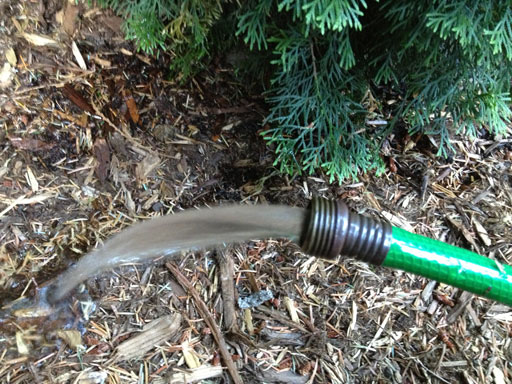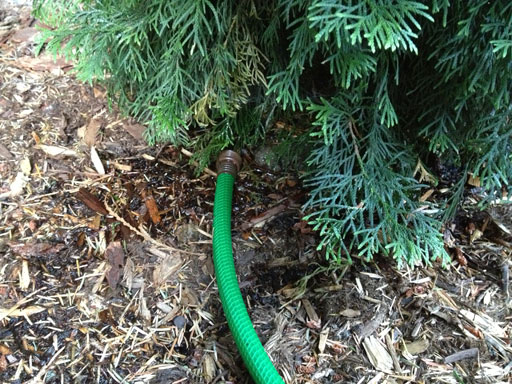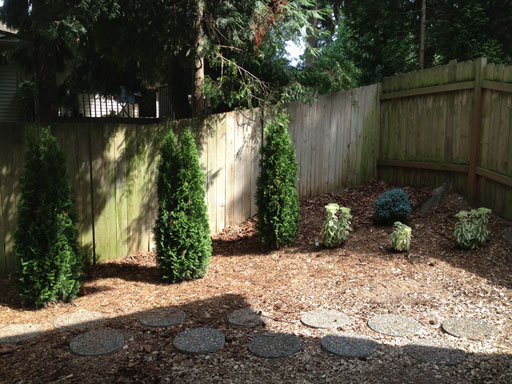I couldn’t find a good guide online for watering newly planted arborvitaes, so I’m writing one! Since the arborvitaes have survived the dry Seattle summer, I thought I’d talk about my technique for watering new arborvitaes.
New Arborvitaes?!
It’s been four months and our new arborvitaes are still alive! Even better, they seem to be thriving. (Last May, we planted three emerald green arborvitaes in our partially-shaded Seattle-area backyard.) They’re bright green and standing perfectly upright. For two landscaping n00bs, the success of the arborvitaes is perhaps proof that we’re not completely incapable when it comes to landscaping.
Why watering new arborvitaes? Because all the advice I found online was different or not Seattle-specific, leaving me to guess at what was best for my arborvitaes. So here it is – this is what worked for me! I live in the hardiness zone 8a,planted the trees in May and watered regularly through September (when the natural rains finally returned).
Watering New Arborvitaes
I watered twice a week, 10-12 minutes per arborvitae. My watering schedule worked to be Saturday (anytime, usually mid-morning) and Wednesday (evening after work).
I set the hose to a steady small stream and placed the end of it at the arborvitae’s root ball. I waited 5-6 minutes then moved the hose to the other side of the root ball. (I sat in a lawn chair and read the Internet while I waited, it’s not a bad arrangement.)
Each arborvitae got a good soaking, and the mulch seemed to do a good job of holding the water close to the plant’s roots. Watering advice is all over the place on the Internet (use a hose! use a sprinkler! water daily! water weekly!), but a hose pointed right at the root ball is worked for me and required no special tools or hose attachments.
I watered the new arborvitaes deep and then let them dry out for a few days before watering again.
Full Sun for Arborvitaes?
We planted the arborvitaes in May specifically to take advantage of the uninterrupted stretch of sunshine over Seattle from June to September. We figured we could water them ourselves and have a sort of “best of both worlds” thing going on: sky provides sun, we provide water.
They ended up needing quite a bit of water to get through the long dry spell. After about the third month without any rain I was starting to give up hope that we’d ever see rain again. (It has since returned, raining nearly every day of September so far this year. Woohoo!)
The arborvitaes’ tags say they require “partial to full sun”. Why would anyone sell a plant that requires “full sun” in the Seattle area? Surely there’s some wiggle room on the full sun requirement.
Besides, I see plenty of healthy arborvitaes around my neighborhood. The arborvitaes get about 4 hours of sunshine on a summer day, so I hope the they soaked up enough sun to carry them through the cloudy winter.
Arborvitae Growth Rate?
If the new arborvitaes have grown at all, I can’t detect it. They’re exactly as high as the fence right now. I suspect they don’t do much growing in the winter so it might be several years before these arborvitaes start serving their true purpose, which is blocking the view of the neighbor’s yard (and their mysterious room full of jars).
What’s Next?
I’m going to let the natural rain take over the watering business, and I’ll write an update in the spring on how the arborvitaes are growing. Yardmageddon 2013 is drawing to a close, but I have a few more updates about our grass growing adventure and the suddenly-blooming rhodys to share in the coming days, so stay tuned! (I can’t believe growing grass counts as an adventure.)


